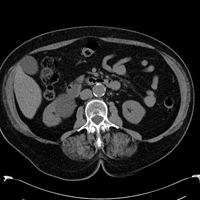Follow Us x
Computed Tomography (CT) / CT Angiography (CTA)
 Computed Axial Tomography (CAT scan) also referred to as a CT scan is an exam that can be used to diagnosis various medical conditions in many different parts of the body.
Computed Axial Tomography (CAT scan) also referred to as a CT scan is an exam that can be used to diagnosis various medical conditions in many different parts of the body.
A CT produces cross-sectional images of the body, while CTA procedures produce images of major blood vessels throughout the body.
Preparing for a CT or CTA
During scheduling, our staff will ask if the patient is allergic to x-ray dye or seafood and if they are taking any of the following diabetic medications: Advandament, Gluchophage, Glucovance or Metformin. If the patient is taking any of these medications it should not be taken for 48 hours after the exam. The patient will need to contact their referring physician to determine if a renal function blood test is necessary before resuming the medication.
If the patient is scheduled for a CT of the abdomen and/or pelvis, they will be asked to drink an oral prep prior to the exam. This oral prep can be picked up at one of our offices prior to the day of the exam. The prep fills the stomach and bowel to clearly visualize the internal organs.
During a CT or CTA
During the exam, the patient will lie on a table that slides into a large circular opening shaped like a donut. The patient will be asked not to move and occasionally will be asked to hold their breath while the images are being taken.
Depending on the CT scan ordered, the patient may also get an injection of intravenous contrast, referred to as x-ray dye, during the exam. The dye goes through the vascular systems of the body, clearly visualizing your major veins and arteries. On occasion, the patient also may be given a rectal contrast. Rectal contrast is used to better visualize the soft tissue structures of the rectum.
Please note that the actual exam time depending on the procedure can vary from only a few minutes to about an hour, but your actual x-ray exposure is minimal.
Following a CT or CTA
Once the CT or CTA study is complete, the patient can return to normal activity. One of our radiologists will interpret the exam and send the results to the patient's physician.

